Conditions
Conditions
Shoulder Conditions
The shoulder is one of the most complex and mobile joint of our body. Shoulder pain is very common and can have a negative impact if left unchecked on our daily work, activities of daily living, as well as sports activities.
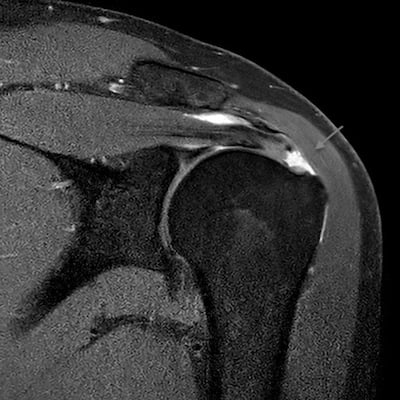
Rotator Cuff Tears
Rotator cuff tears – συχνότερα του υπερακάνθιου. Συχνά τραυματική ή εκφυλιστική. Επί αποτυχίας της συντηρητικής θεραπείας, το gold standard είναι η συρραφή με αρθροσκόπηση ώμου.

Dislocated Shoulder
A shoulder dislocation may lead to instability, especially in the young. Arthroscopy is indication from the 1st dislocation in ages less than 25, and from the 2nd dislocation in individuals older than 25.
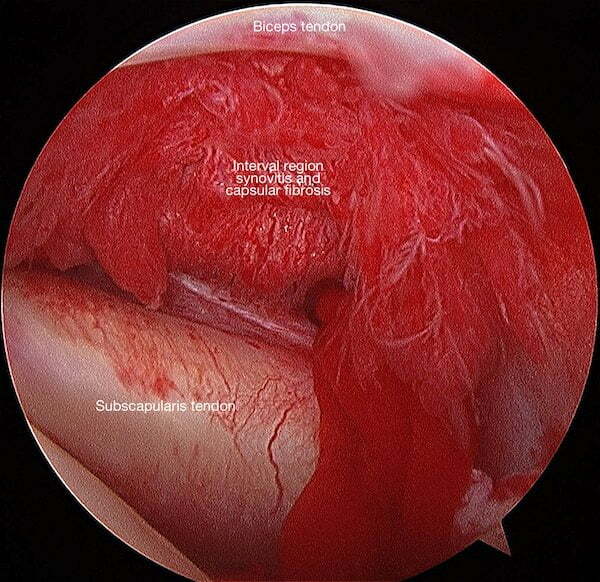
Frozen Shoulder
Γνωστός & ως συμφυτική θυλακίτιδα, πιο συχνός σε γυναίκες 30-60ετών – πιθανή συσχέτιση με διαβήτη & παθήσεις του θυρεοειδή. Πόνος & δυσκαμψία είναι τα πιο τυπικά στοιχεία της πάθησης. Επί αποτυχίας της συντηρητικής θεραπείας, συνιστάται η αρθροσκόπηση ώμου.

Shoulder arthritis
Osteoarthritis, cuff arthropathy, post-traumatic arthritis after a fractures. Cartilage wear and destruction of the joint surfaces. Early arthritis can be treated arthroscopically, whereas more advanced cases often need shoulder arthroplasty.
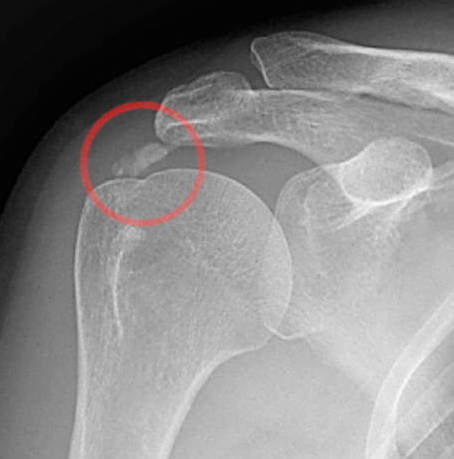
Calcific Tendonitis
Caused by calcific deposits forms in the cuff tendon insertion. Common and particularly painful. Night pain is a characteristic feature. Cause is unknown. Supraspinatus usually affected. Arthroscopy can give a solution is resistant cases.
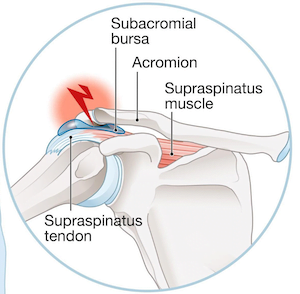
Impingement Syndrome
Impingement syndrome is very common after the age of 30-40. Cuff tendons catch on the acromion on arm elevation, causing pain and inflammation. Arthroscopy helps in recalcitrant cases.

Rotator Cuff Tears
Ρήξη τένοντα ώμου, πιο συχνά υπερακανθίου, με αδυναμία ανύψωσης του άκρου & έντονο πόνο

Shoulder arthritis
Φθορά του χόνδρου & τριβή των αρθρικών επιφανειών

Dislocated Shoulder
Bankart lesion & shoulder instability, with risk of recurrence related to age

Calcific Tendonitis
Calcific deposits in the supraspinatus, with acute night pain

Frozen Shoulder
Φλεγμονή του θυλάκου του ώμου, με πόνο & δυσκαμψία, ειδικά στην έξω στροφή

Impingement Syndrome
Τριβή του τένοντα του ώμου στο ακρωμιον της ωμοπλάτης, φλεγμονή - τενοντίτιδα & δυσκολία στις κινήσεις
Conditions
Elbow Conditions
The elbow is a complex joint that is not immune to injuries, degeneration and wear. Most elbow problems are solved with conservative measures, but occasionally surgery is needed.
Tennis - Golfer's Elbow
Η έξω & έσω επικονδυλίτιδα (tennis elbow & golfer’s elbow αντίστοιχα), είναι η φλεγμονή των τενόντων που εκφύονται από τον αγκώνα. Η θεραπεία είνα κατά κανόνα συντηρητική, με το χειρουργείο να περιορίζεται στις ανθεκτικές περιπτώσεις.
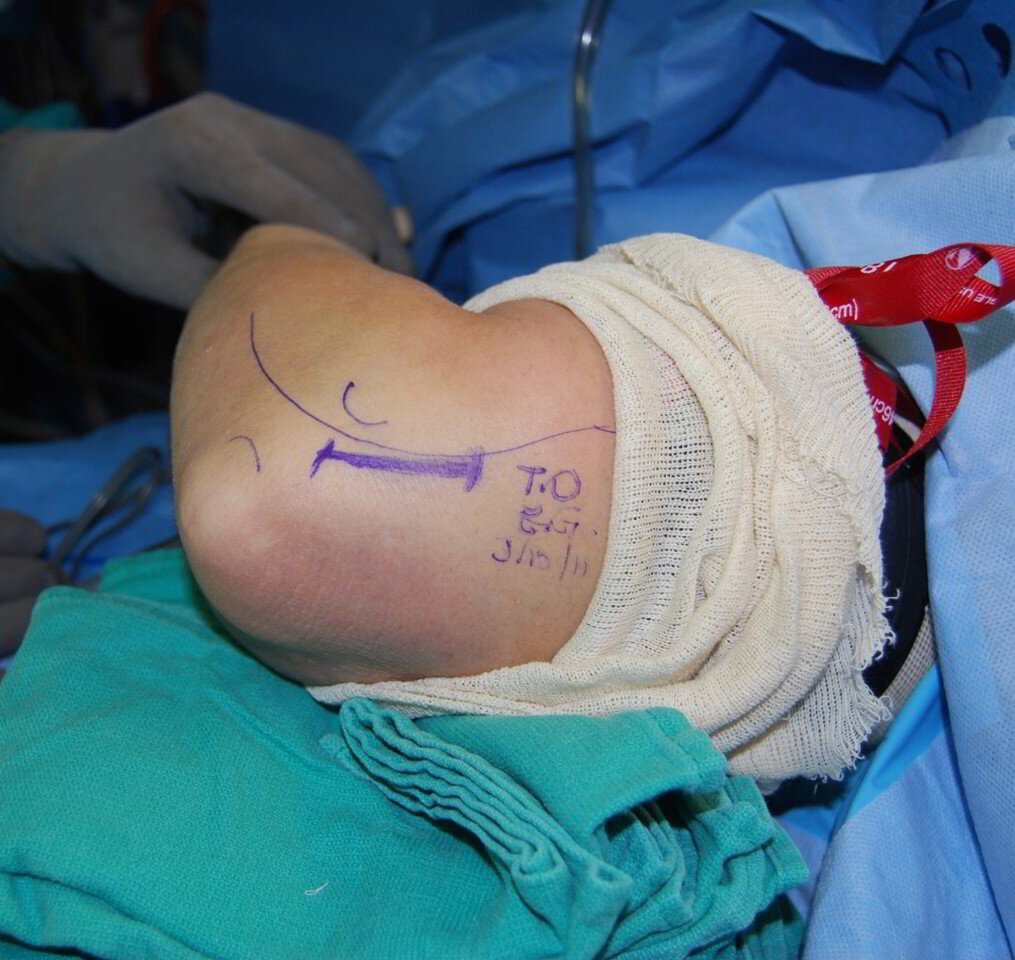
Cubital tunnel syndrome
Cubital tunnel syndrome refers to the entrapment of the ulnar nerve at the elbow, resulting in numbness & tingling of the small and ring fingers. Treatment is typically surgical, with ulnar nerve decompression at the elbow +/- anterior transposition.
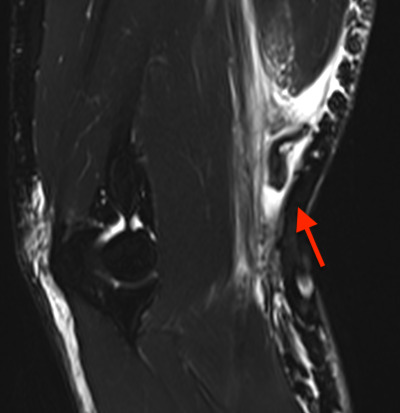
Distal Biceps Tendon Rupture
Distal biceps tendon tears are common. Mechanism of injury usually involves forced extension of the flexed elbow. Lack of the biceps results in reduced supination strength by >50%.
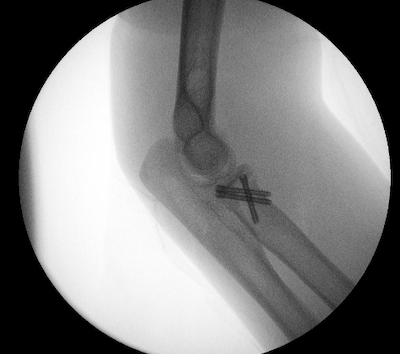
Elbow fractures
Olecranon Fractures, κεφαλής κερκίδας, κορωνοειδούς απόφυσης, ρήξη συνδέσμων, κατάγματα – εξαρθρήματα. Πρόκειται για πολύπλοκα κατάγματα, που συνήθως χρήζουν χειρουργικής θεραπείας.

Tennis - Golfer's Elbow
Tennis elbow & Golfer's elbow. Φλεγμονή των τενόντων που εκφυονται από τον αγκώνα

Cubital tunnel syndrome
Σύνδρομο συμπίεσης ωλένιου νεύρου στον αγκώνα. Μούδιασμα μικρού δακτύλου & παραμεσου

Distal biceps tendon tears
Forced extension of the bent elbow. Reduction of supination strength without surgery
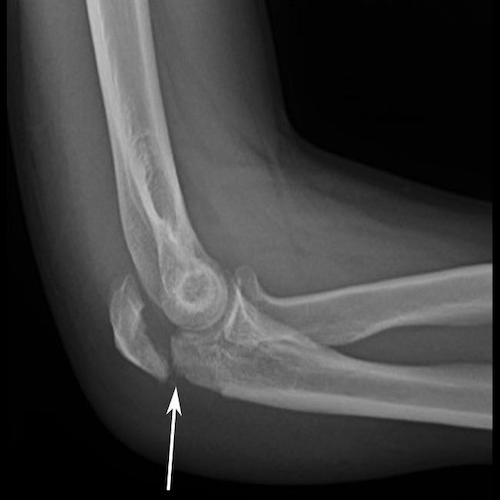
Elbow fractures
Fractures of the olecranon, radial head, coronoid process, fracture-dislocations
Conditions
Knee Conditions
Knee pain is very common in all ages. It could be related to acute injury, overuse, or to an underlying pathology.
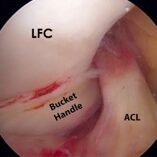
Locked Knee
That's a knee that suddenly cannot extend fully, typically after rotational stress or squatting. The common lesion is a meniscal tear (bucket handle tear). Treatment involves knee arthroscopy, and meniscal repair.
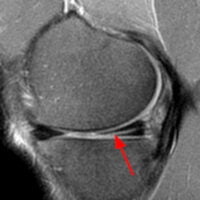
Meniscal Tears
Ο έσω & έξω μηνίσκος συνεισφέρουν στην απορρόφηση των κραδασμών. Η ρήξη μηνίσκου μπορεί να είναι τραυματική (άτομα >40 ετών – στροφική κάκωση στο φορτισμένο γόνατο) ή εκφυλιστική (>40 ετών). Το χειρουργείο γίνεται αρθροσκοπικά (μηνισκεκτομή ή μηνισκοσυρραφή).

ACL Tears
The typical mechanism of an ACL tear involves rotational stress on the loaded & flexed knee. In younger patients with greater functional demand, surgery with ACL reconstruction is warranted.
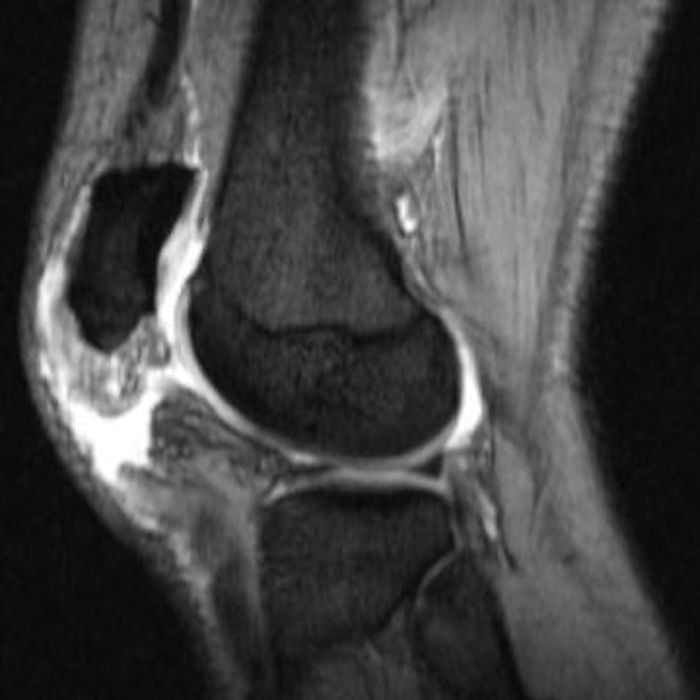
Patellar Tendon Rupture
Intense pain, with swelling and inability to weight-bear are classic signs of patellar tendon rupture. There is usually a palpable gap right under the patella. Treatment is surgical.
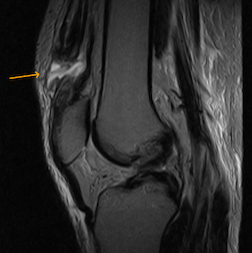
Quadriceps Tendon Rupture
Individuals with chronic conditions that compromise tendon vascularity are more susceptible to quadriceps rupture, ie rheumatoid arthritis or renal insufficiency. Treatment is surgical.

Locked Knee
Usually due to a bucket-handle tear, after a squat or rotational stress

Meniscal Tears
Τραυματική (40 ετών). Αρθροσκοπική μηνισκεκτομή ή μηνισκοσυρραφή.

ACL tears
Rotational injury in the loaded & bent knee. Arthroscopic reconstruction

Quadriceps Tendon Rupture
Common in patients with underlying conditions. Treatment is surgical

Patellar Tendon Rupture
Πόνος, οίδημα & ψηλαφητό κενό. Χειρουργική θεραπεία.
Conditions
Hand Conditions
54 of the 206 bones in our body are found in the hand and wrist.

Carpal tunnel syndrome
Entrapment syndrome of the median nerve in the wrist. Numbness & tingling of the thumb, index and middle finger. Night pain is common. Decompression at the wrist under local anaesthetic is the treatment of choice.
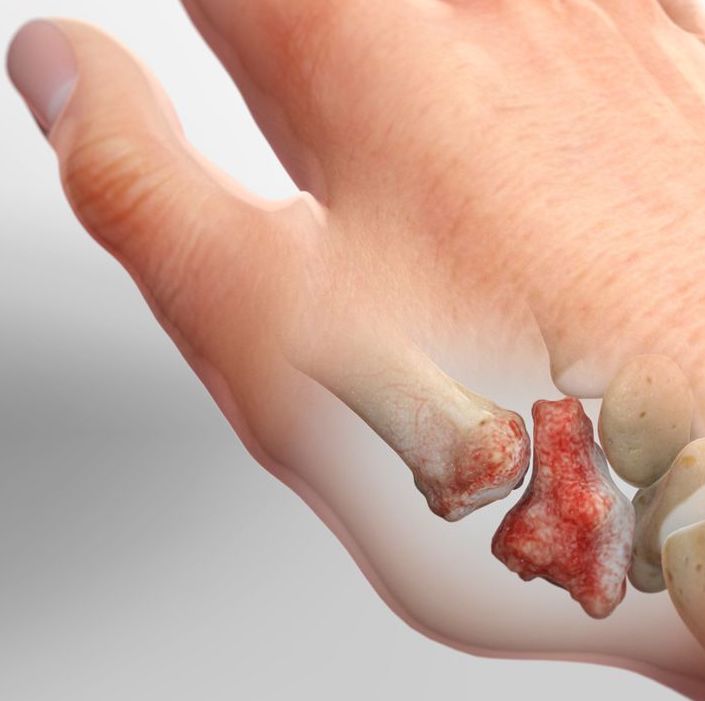
Thumb CMC Arthritis
Osteoarthritis on the base of the thumb, between the trapezium and the base of the 1st metacarpal. One of the commonest types of arthritis in the hand, often in professionals that do repetitive movements with their hands, such as hairdressers or dentists.
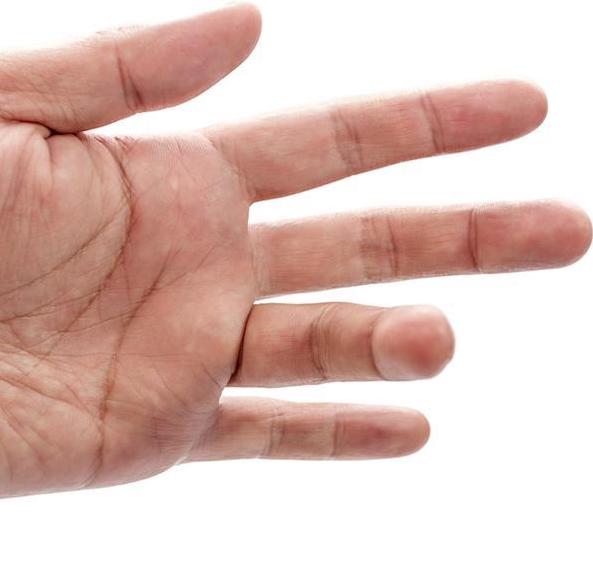
Trigger Finger
Also known as stenosing tenosynovitis. Finger is stuck in flexion and cannot be extended. Cause is thickening and inflammation of the A1 pulley.
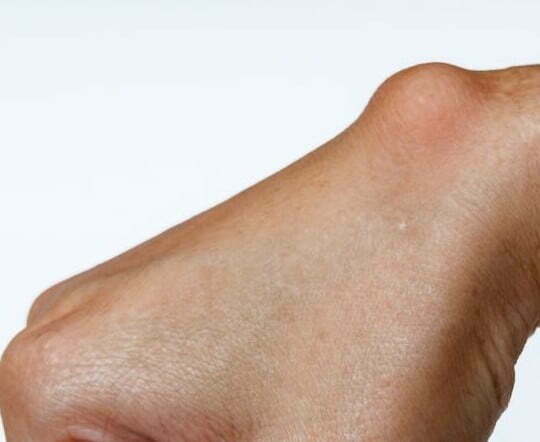
Ganglion Cyst
A ganglion cyst usually originates from a joint or from a tendon sheath. It's essentially a small lump that shows up under the skin. Common in individuals 20-50 years of age, in the wrist or hand. Contains thick fluid of gel like consistency.

De Quervain's tenosynovitis
DeQuervain's tenosynovitis is essentially inflammation of the tendons of the thumb (APL, adductor pollicis longus & EPB, extensor pollicis brevis). Pain in the base of the thumb related with grasping objects.

Carpal tunnel syndrome
Σύνδρομο παγίδευσης του μέσου νεύρου στον καρπό. Μούδιασμα συνήθως σε αντίχειρα, δείκτη & μέσο δάκτυλο.

Trigger Finger
Στενωτική τενοντοελυτρίτιδα ή trigger finger. Εμπλοκή δακτύλου σε κάμψη & αδυναμία έκτασης. Πάχυνση Α1 ελύτρου.

Ganglion Cyst
Common wrist lump. Contains thick gel-like fluid
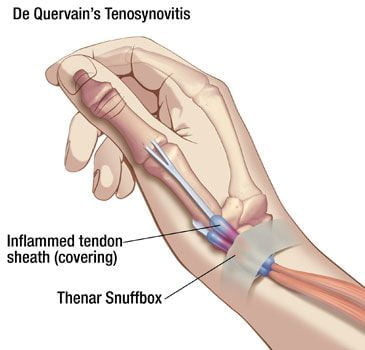
De Quervain's tenosynovitis
Inflammation of the tendons of the thumb (APL & EPB)

Thumb CMC Arthritis
Osteoarthritis of the base of the thumb, between 1st metacarpal and trapezium
Conditions
Fractures
Fractures may be treated conservatively or surgically, depending on location, personality of the fracture, etc.

Clavicle Fractures
Clavicle fractures are very common, for example after a fall from a bike. Most clavicle fracture are treated non-operatively. Indications for surgical treatment include significant displacement, comminution or shortening.

Ankle Fractures
Treatment for ankle fractures depending on the type and stability of the fracture. Stable fractures require observation with X-rays. Unstable fractures need surgical fixation.

Distal Radius Fractures
Most distal radius fractures can be reduced in an acceptable position and treated with a cast. Open fractures, intra-articular fractures and fractures that have subsequently lost reduction in the cast, typically need surgical fixation.

Olecranon Fractures
Olecranon fractures are typically significantly displaced and comminuted, so that surgical treatment with open reduction & internal fixation is warranted (tension band wiring, plate & screws, or suture fixation).
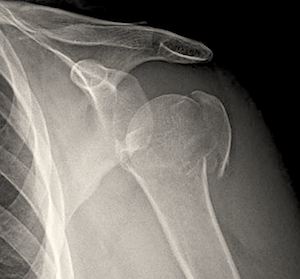
Proximal Humerus Fractures
Most proximal humerus fractures are relatively undisplaced and can be treated conservatively. Others need surgical treatment due to displacement, functional demands or conservative treatment failure.

Humeral Shaft Fractures
Traditionally, humeral shaft fractures are treated non- operatively. Surgery might be required in some cases (multiple concomitant injuries, open fractures, nerve palsy, nonunion).

Distal Humerus Fractures
Distal humerus fractures, are mostly treated surgically, with open reduction & internal fixation. In some cases (very distal fractures), arthroplasty is needed instead.

Scaphoid Fractures
Treatment of scaphoid fractures depends on many factors, such as degree of displacement, location (distal pole, waist, proximal pole), previous treatment failure (nonunion).
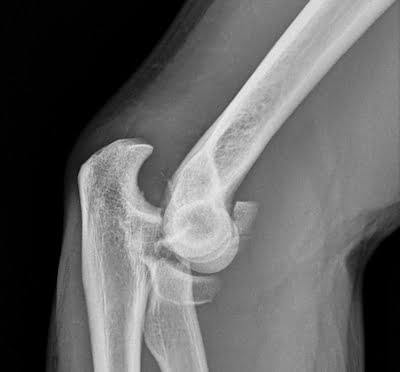
Complex Elbow Fractures
Most complex elbow fractures need surgery. These include radial head fractures, coronoid process fractures, olecranon fractures, fracture-dislocations, or a combination of the above.

Clavicle Fractures
Very common after a fall. Most commonly in the middle of the clavicle. Mostly conservative treatment

Distal Radius Fractures
Συχνό οστεοπορωτικό κάταγμα > 60 ετών. Παρεκτοπισμένα ή ενδαρθρικά κατάγματα απαιτούν χειρουργείο.

Ankle Fractures
Η θεραπεία ποικίλει ανάλογα με το είδος & τη σταθερότητα του κατάγματος.

Scaphoid Fractures
Displacement, location (distal, proximal, waist), or prior treatment failure will dictate treatment.

Humeral Shaft Fractures
Traditionally treated non-operatively. Some may require surgery.

Complex Elbow Fractures
Περιλαμβάνουν κάταγμα κεφαλής κερκίδας, κορωνοειδούς απόφυσης, ωλεκράνου, καθώς & συνοδό εξάρθρημα.

Olecranon Fractures
Usually displaced and comminuted, requiring surgery.

Proximal Humerus Fractures
Most are relatively undisplayed and can be treated non-operatively

Distal Humerus Fractures
Most need surgery, with either fixation or arthroplasty
Symptoms
Location of pain, combined with other factors such as age, mechanism of injury, associated symptoms, as well as clinical findings, help us make a correct diagnosis and treat the specific underlying problem.
Book online now
Arthroscopic & Reconstructive Surgery - Orthopaedic Trauma - Sports Injuries - Microsurgery
Georgios Panagopoulos MD
Experienced Surgeon, with significant clinical experience & research work.
Call us now or book an appointment regarding your issue.
